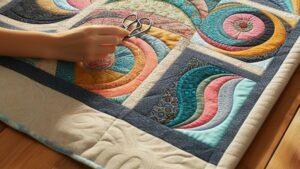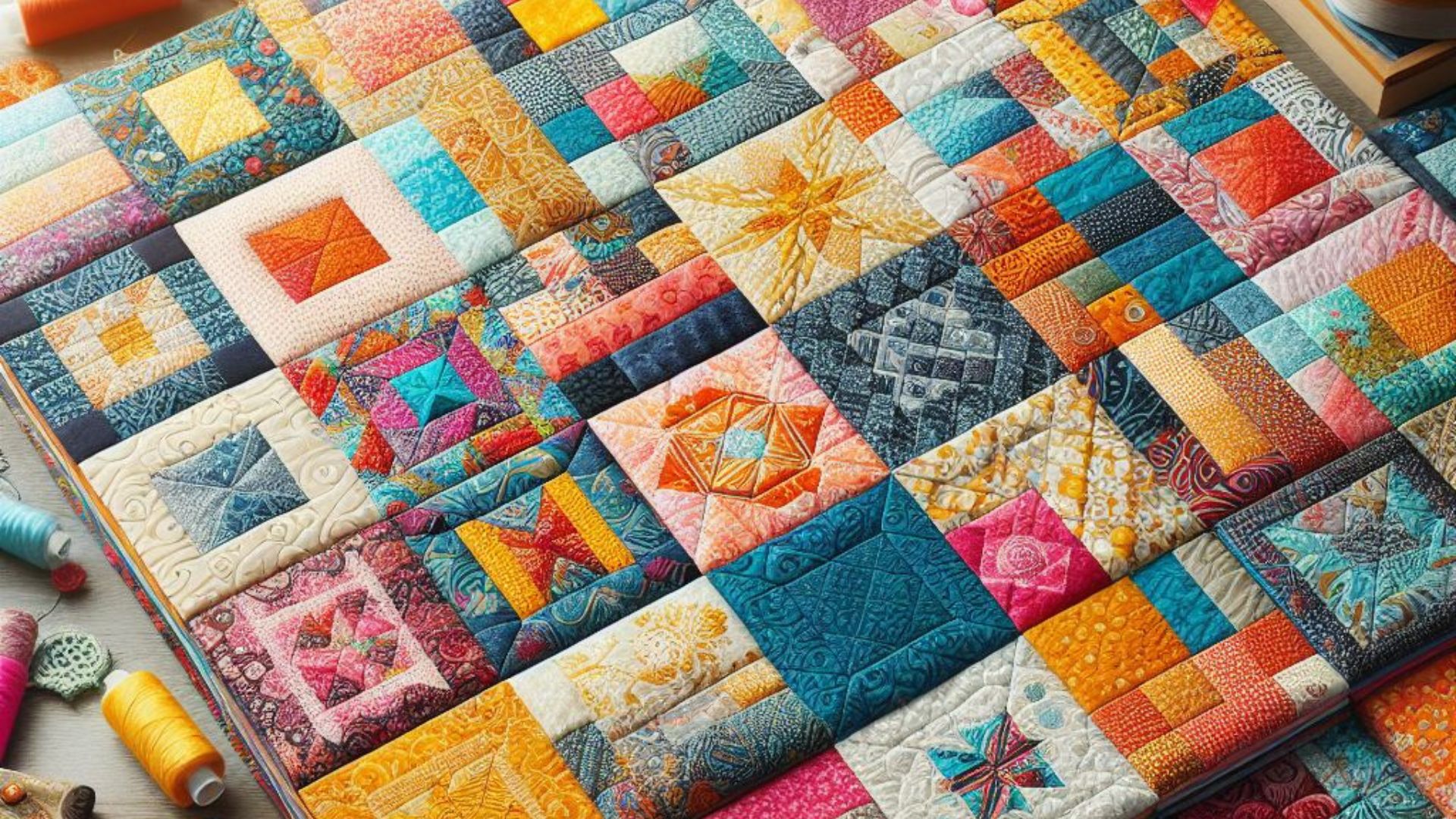Quilting, a cherished craft passed down through generations, invites both beginners and seasoned artisans into a world of creativity and patience. One of the first questions often asked by those stepping into this artistry is, “How long does it take to make a quilt?” The answer, much like the stitches in a quilt, varies, shaped by numerous factors. Let’s explore this intricate journey.
Understanding the Quilting Process
Gathering Inspiration and Materials
Embarking on a quilt-making journey typically starts with inspiration. Whether drawn from tradition, nature’s beauty, or personal narratives, the design phase ignites the creative spark. The time spent brainstorming and finalizing a design can range from a few hours to several days, depending on complexity.
Once the design is settled, gathering materials becomes the next step. Sourcing fabric, threads, batting, and other essential tools might take a day or span across a few weeks, depending on availability and specific preferences.
Cutting, Piecing, and Stitching
The heart of quilt-making lies in precision. Cutting fabric, piecing blocks together, and stitching demand careful attention to detail. This phase can consume a substantial portion of the overall time investment. A lap-sized quilt might take around 20-30 hours for a skilled quilter, while a more intricate design or larger quilt could require 50-100+ hours.
Quilting Techniques and Complexity
Different quilting techniques exist, influencing the time required. Hand quilting, known for its intricacy and traditional charm, demands a significant time commitment, potentially spanning weeks or months for a complex design.
On the other hand, machine quilting, quicker due to its efficiency, might take less time, with a lap-sized quilt potentially completed in 10-15 hours.
Personal Factors and Skill Level
Individual speed and proficiency play a crucial role. Beginners may take longer to navigate the process, gradually gaining speed and finesse with practice. Experienced quilters often work faster, but intricacy and perfectionism might elongate the timeline for complex designs.

A Labor of Love
In essence, determining the exact time to make a quilt is as varied as the quilters themselves. A lap-sized quilt might take a few weeks for some, while others could complete it in a couple of days. Larger or more intricate designs might extend the duration to months.
Ultimately, the essence of quilt-making lies not in the clock but in the journey itself—the joy of creation, the bond between fabrics, and the stories woven into each stitch. Embracing the process, relishing each moment, and celebrating the finished masterpiece is the true essence of quilting.
So, to those embarking on this creative adventure, remember, while the clock ticks, it’s the love and dedication poured into every thread that truly makes a quilt timeless.
External Links for Further Reading:
Perfecting the Craft: Tips for Quicker Quilting
While the time taken to make a quilt is influenced by various factors, certain strategies can streamline the process without compromising quality. Here are some tips to help you quilt more efficiently:
1. Preparation Is Key
Before diving into cutting and stitching, ensure your workspace is organized. Pre-wash and iron fabrics, organize tools, and have a clear design plan. A well-prepped space sets the stage for smoother quilting.
2. Opt for Precuts
Utilize precut fabric bundles like charm packs, layer cakes, or jelly rolls. These pre-cut pieces save time on measuring and cutting, allowing you to jump straight into piecing.
3. Chain Piecing Technique
Adopt the chain piecing method to stitch blocks efficiently. This technique involves continuously feeding fabric through the sewing machine without cutting the thread between pieces, reducing downtime and speeding up the piecing process.
4. Consider Quilting Services
For those aiming to complete a quilt swiftly, professional quilting services are an option. Long-arm quilters can swiftly quilt the layers together, saving substantial time compared to hand quilting or using a domestic sewing machine.
5. Practice Consistency
Developing a consistent quilting routine enhances efficiency. Dedicate regular time slots to quilting, even if it’s just an hour a day. Consistency helps progress steadily.
6. Explore Modern Tools
Embrace technology and modern tools like rotary cutters, specialty rulers, and sewing machines with quilting features. These tools are designed to streamline the quilting process and can significantly reduce time.
7. Engage in Continuous Learning
Continuously expanding your quilting knowledge through tutorials, workshops, and online resources can improve skills, efficiency, and problem-solving abilities.
Conclusion: Embrace the Journey
Quilting, a labor of love, thrives on patience, creativity, and dedication. While these tips can expedite the process, remember that quilting is an art form to be relished—a symphony of colors, textures, and stories stitched together.
Whether you complete a quilt in a few days or several months, each stitch is a testament to your creativity and commitment. Embrace the journey, celebrate the process, and revel in the joy of creating something beautiful with your hands.
External Links for Further Inspiration:
Comparison tabular
| Aspect | Hand Quilting | Machine Quilting |
|---|---|---|
| Skill Required | Requires higher skill and precision. | Can be easier for beginners; skill develops with use. |
| Time Investment | Generally more time-consuming. | Typically faster and more efficient. |
| Control & Detail | Offers intricate control over stitches and design. | Allows for precision with various quilting designs. |
| Aesthetic Appeal | Traditional, charming appeal. | Can achieve both traditional and modern aesthetics. |
| Equipment Needed | Basic tools like needles, hoop, thimble, etc. | Requires a sewing machine and quilting accessories. |
| Cost | Lower initial investment; ongoing thread costs. | Higher initial machine cost; fewer ongoing expenses. |
| Versatility | Ideal for smaller projects or intricate designs. | Great for large projects and varied quilting styles. |
| Learning Curve | Steeper learning curve; requires practice. | Easier learning curve; practice refines techniques. |
Both hand quilting and machine quilting have their unique advantages and charm. The choice often depends on personal preference, project size, desired aesthetics, and available time. Some quilters even combine both methods, using hand quilting for intricate details and machine quilting for efficiency.
Wrapping up
In the colorful world of quilting, whether you’re drawn to the rhythmic dance of a needle through fabric or the hum of a sewing machine stitching stories together, remember, there’s no right or wrong way to create a quilt.
The beauty of this craft lies in its diversity—embracing traditions, exploring new techniques, and weaving together a tapestry that reflects your unique creativity. Whether you opt for the time-honored elegance of hand quilting or the efficiency of a machine, each stitch resonates with your passion and dedication.
As you journey through the fabric landscapes, relish every moment, celebrate every finished block, and cherish the stories infused into every quilt. For in this world of quilting, time isn’t measured by the clock but by the love woven into every seam.
May your quilting adventures be filled with joy, inspiration, and the warmth that only a handmade quilt can bring.
Happy quilting!

For over a decade, I’ve been Mike, an artist, crafter, and designer deeply immersed in the Croc world. I thrive on crafting unique, size-inclusive patterns, fostering creativity, and sharing them on ktforum.com. My designs aim to ignite your creative spark and delight you, ensuring clarity and ease of use through rigorous testing. Join me in expressing your creative flair and showcasing your craft with joy.
Related Posts
- Can you quilt by hand instead of using a machine
Absolutely, quilting by hand is a timeless and rewarding craft that allows you to create…
- Quilting: Rows vs. Sections
Quilting, an artful fusion of fabric and stitching, often presents the delightful conundrum of choosing…
- Creating Even Stitches in Your Quilt: A Comprehensive Guide
Quilting is an art form that involves precision, creativity, and attention to detail. One crucial…
- Can I use embroidery in quilting
Absolutely. Embroidery can beautifully complement quilting, adding intricate details and personal touches to your quilt…

